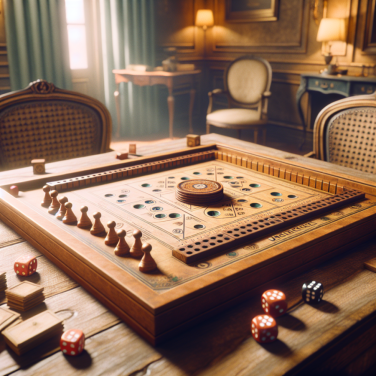Lelo Burti Rules and Gameplay: Embracing Tradition Through Sport
Lelo Burti, often referred to as Georgian rugby, is a traditional game steeped in cultural significance and rich history. The game's roots can be traced back to ancient fertility and earth celebrations, and it is often played in the rugged, picturesque landscapes of Georgia. The spirit of this game goes beyond mere competition; it embodies community pride, camaraderie, and a celebration of life and tradition.
Rules and Gameplay:
The rules of Lelo Burti are quite simple, yet they create a game of intense physical endurance and strategy. At its core, Lelo Burti is similar to rugby with the main objective being to carry, throw, or kick a ball — the 'lelo' — over the opponents’ boundary line to score. However, unlike rugby, the game features a few distinctive elements that make it uniquely Georgian.
Firstly, the Lelo Burti field has no fixed size, but it generally spans a large area, often between two villages, with each village’s boundary line acting as the goal. The field can be variable, encompassing various terrains that may include hills, rivers, and woods, adding to the game’s challenging nature.
The game is typically played during Easter and begins with a ceremonial start where the ball, filled with sand or earth to give it weight, is blessed by a local priest. The ball represents the earth's fertility and the struggle to win it symbolizes human effort in agricultural labor.
There are no set team sizes in Lelo Burti, with teams consisting of entire villages at times. The number of players can range from dozens to hundreds, leading to sprawling and chaotic melees. It's not just the young and athletic who participate; all community members are welcome, indicative of the game's inclusive nature.
When it comes to attire, there is no specific uniform, with players often dressing in everyday clothes. This tradition reinforces the concept of Lelo Burti as a community event rather than a professional sport.
Once the game commences, the only rule for carrying the ball to the opposing side is that it must not be carried in a vehicle or by an animal. It can be passed by hand or kicked. The game is known for being rough, with very few restrictions on tackling, leading to intense physical confrontations.
The match ends when one team successfully places the ball over the opponents’ line.
Read also:
Unraveling the Mystery: are Golf Balls Hollow?
Unveiling the Dynamics of Lelo Burti: Georgia's Heritage of Vigor
Lelo Burti, often described as Georgian dodgeball, goes beyond merely being a sport; it is a cultural phenomenon embedding the rich narrative of Georgian tradition, history, and community spirit. The dynamics of the game involve a blend of raw physical strength, strategy, and an unwavering sense of unity that echoes the essence of Georgia's heritage of vigor.
At the heart of Lelo Burti lies the objective of transporting a heavy, sand-filled ball, known as the 'Lelo,' to a specific location, which serves as the opposing team's goal. Unlike the well-demarcated playgrounds of modern sports, Lelo Burti is typically played in expansive fields, sometimes between neighboring villages, thereby blurring the lines between sport and life, as the entire community becomes the arena of action.
What sets Lelo Burti apart is the allowance of almost unlimited physical contact, akin to rugby. This crucial aspect permits a whirlwind of tackles, scrums, and sprints that not only highlight the players' physical prowess but also emphasize resilience and camaraderie among participants. As players lock arms to resist the opposing team's advances, one sees an expression of collective strength and endurance that is representative of the Georgian spirit.
Tactical nuance is as integral to Lelo Burti as brute force. Teams comprise members of varying strengths and roles, with adept runners, powerful lifters, and strategic blockers forming an interdependent system. The sport demands sharp reflexes and quick decision-making as the game's momentum can shift with a single adept maneuver or a well-coordinated team effort, making every round an unpredictable exhibition of human tenacity.
Furthermore, the game encapsulates a sense of identity and continuity for Georgians. Lelo Burti is not confined to being merely a sport but serves as a celebration of life, often played during festivities such as the Georgian Orthodox holiday of Easter. Historically, it is said that players wore their ritual robes during the game, thereby infusing the sport with religious and cultural significance.
The societal impact of Lelo Burti cannot be overstated. The sport is renowned for building and strengthening community bonds as it brings together people of different ages and social strata. The shared experience of competing in, or even witnessing, such a vibrant game reinforces social cohesion, creates enduring memories, and celebrates collective identity.
Today, Lelo Burti still thrives as a symbol of Georgian heritage.




